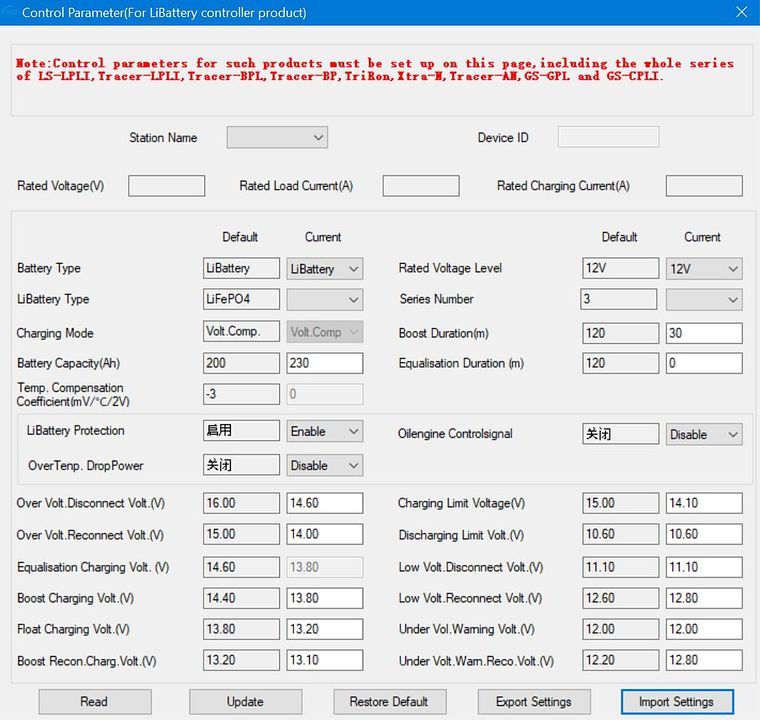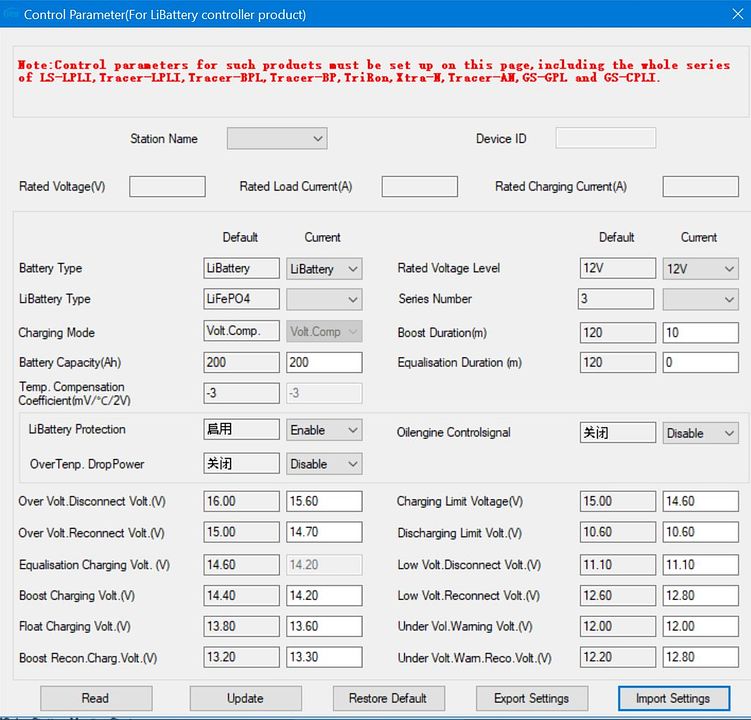I have 2 200 watt 24v Rich solar panels, 5.32amp, 45.4 Voc, 37.6 Vmp, in series
Epever Tracer4210an MPPT connected to PC
2 12.8v 200ah 2560wh Chins LiFePO4 in series
Aeliussine 2000W 24v pure sine wave inverter
I have read to much, my brain is full of mush and I just need to know what settings you would recommend for the charge settings in the Epever software please.
I tend to overdo things and I have myself confused. I currently have it all set to default.
The solar controller always says PV .5 kw when it scrolls through.
The epever software also says .51 kWh total solar energy produced.
I just feel like something is not right.
Thanks in advance.
Epever Tracer4210an MPPT connected to PC
2 12.8v 200ah 2560wh Chins LiFePO4 in series
Aeliussine 2000W 24v pure sine wave inverter
I have read to much, my brain is full of mush and I just need to know what settings you would recommend for the charge settings in the Epever software please.
I tend to overdo things and I have myself confused. I currently have it all set to default.
The solar controller always says PV .5 kw when it scrolls through.
The epever software also says .51 kWh total solar energy produced.
I just feel like something is not right.
Thanks in advance.







